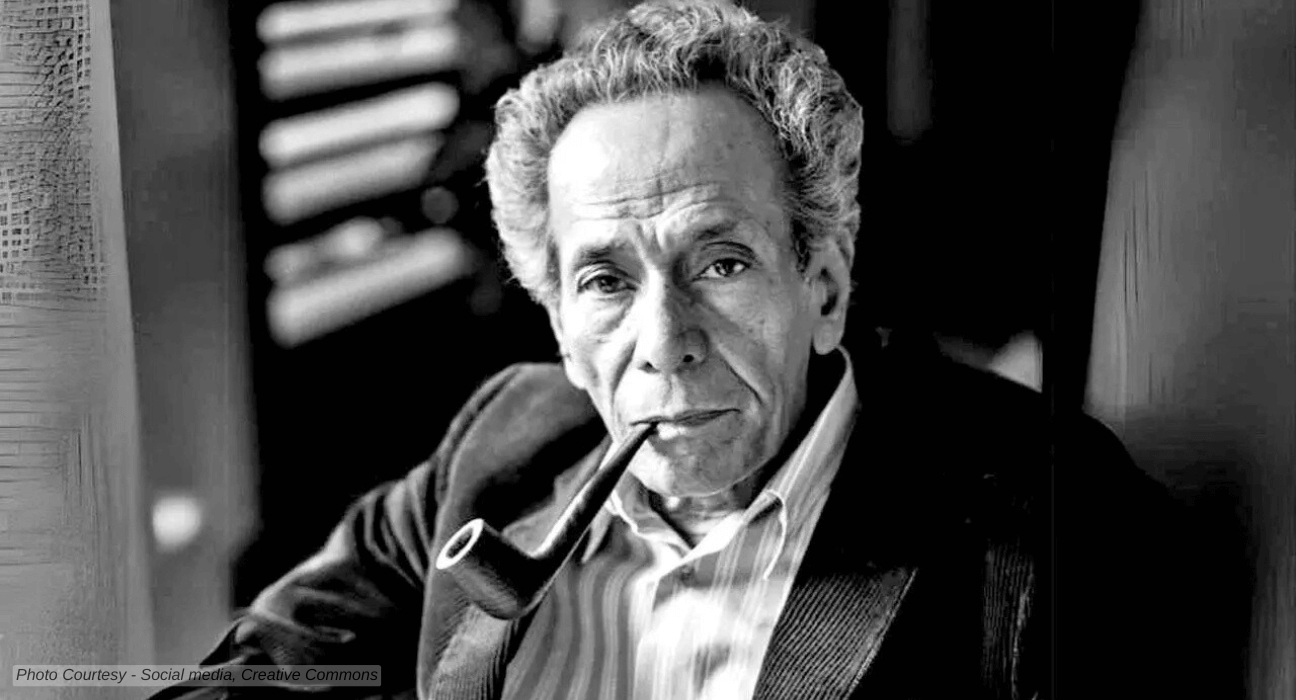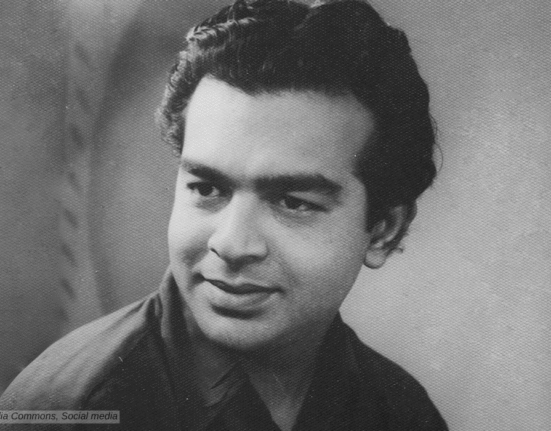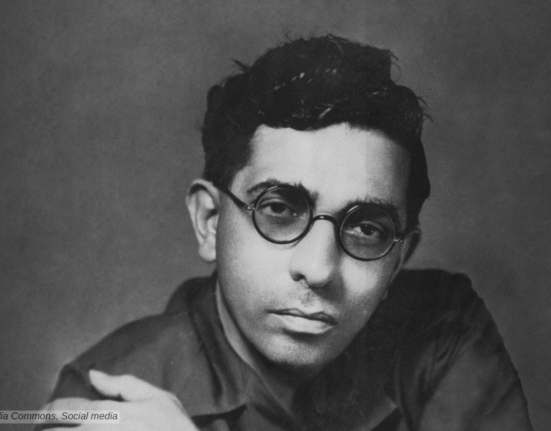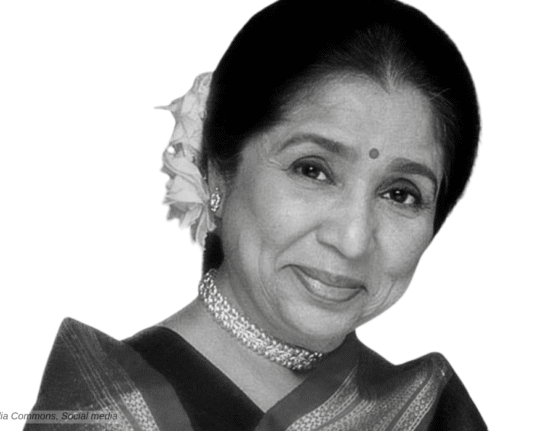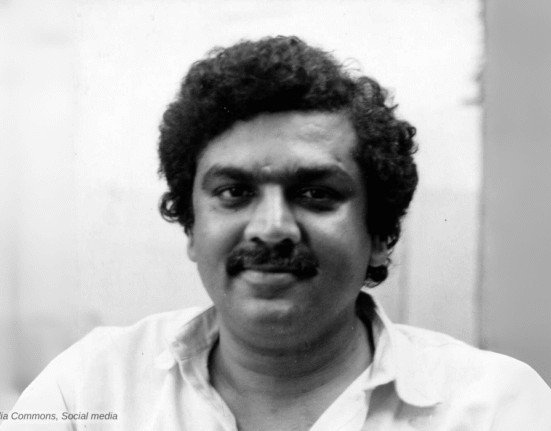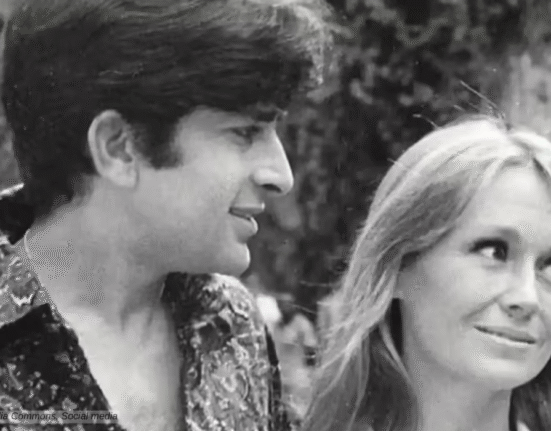Legendary playwright, director, poet, and actor Habib Tanvir bridged the gap between folk and urban theater in India with his work with tribal artists of Chhattisgarh at his “Naya Theatre.” His plays, like Agra Bazar (1954) and Charandas Chor (1975), remained iconic for their exploration of deep human emotions.
“He had so many talents, he was born with everything. He had cerebral intellect, the heart and sensitivity of a poet, talent for acting singing, theatre and painting. And he was handsome too, a ladykiller.”
Nageen Tanvir, Daughter
The Humble Beginning
Habib Tanvir was born Habib Ahmed Khan on September 1, 1923, in Raipur. After getting his early education from Laurie Municipal High School, Raipur, he gets his BA degree from Morris College, Nagpur. For his master’s, he went to the Aligarh Muslim University. Habib Ahmed Khan started writing poetry from an early age and adopted the Takhallus “Tanvir.”
After completing his education, he went to Bombay, where he joined All India Radio as a producer. These were the early days of the Indian People’s Theatre Association (IPTA). He joined IPTA and started working with stalwarts like Prithviraj Kapoor, Balraj Sahni, Ritwik Ghatak, Utpal Dutt, Khwaja Ahmad Abbas, and others.
Stage’s Calling
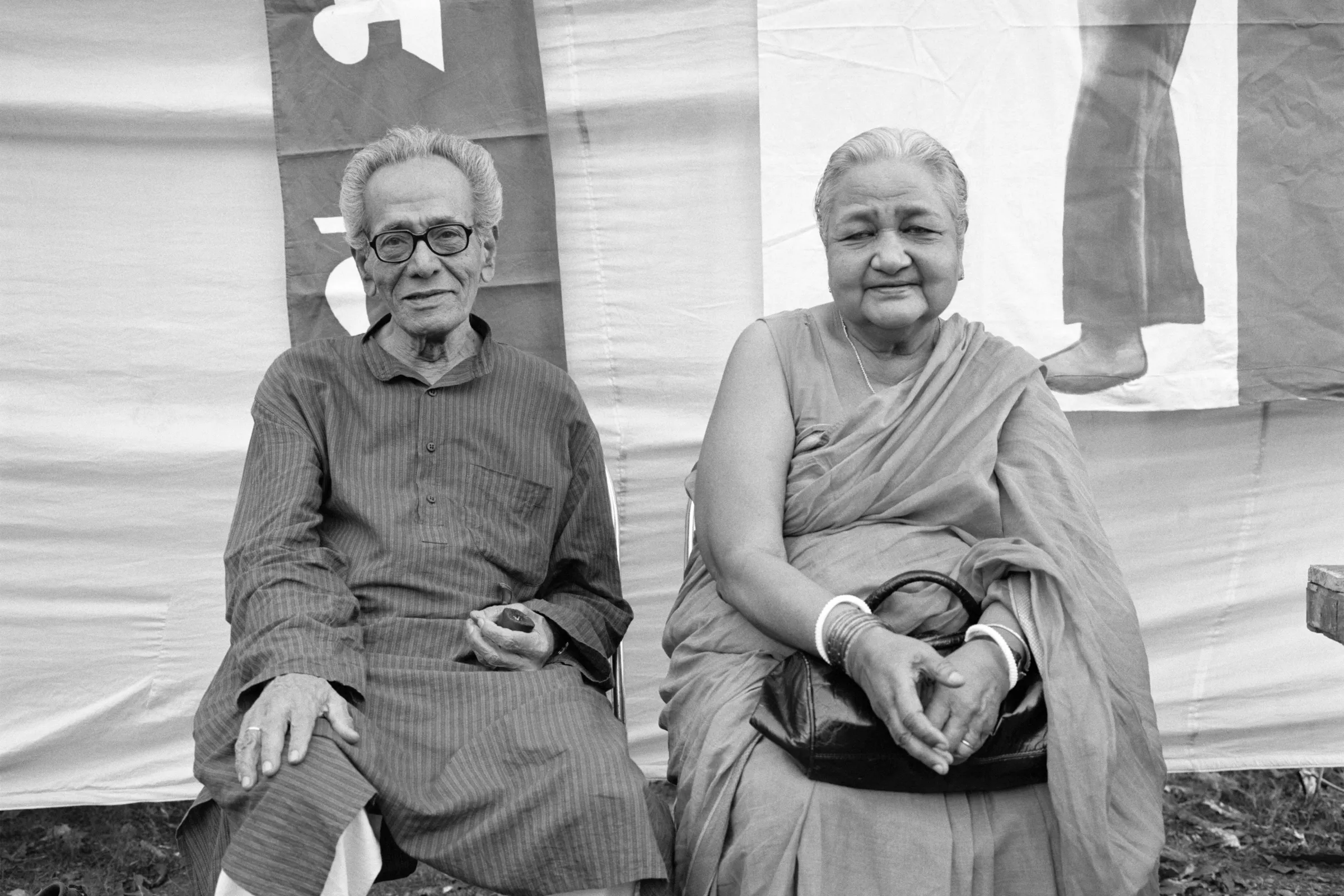
In 1954, he moved to New Delhi and joined Qudsia Zaidi’s Hindustani Theatre. The same year, he produced his first iconic play, “Agra Bazar,” based on 18th-century Urdu poet Nazir Akbarabadi. For this production, he collaborated with local residents, folk artists from Okhla village, and students of Jamia Millia Islamia, creating a unique theatrical experience. Notably, he staged the play in an open marketplace rather than a confined space, presenting a vibrant, unconventional approach to Indian theater.
In 1955, in his 30s, Habib moved to England and trained in acting at the Royal Academy of Dramatic Arts (RADA) and in direction at Bristol Old Vic Theatre School. He then spent the next two years traveling through Europe, observing various theater activities.
Naya Theatre
His journey took a significant turn when he founded the Naya Theatre in 1959, a company that became synonymous with his name. Here, Tanvir pioneered the inclusion of indigenous performance forms such as ‘nacha,’ a traditional folk theatre form of Chhattisgarh, creating a unique theatrical language that was both accessible and profound.
One of his most celebrated works was “Charandas Chor” (1975), which not only showcased his mastery over playwriting but also reflected his commitment to social issues and his knack for storytelling. “Charandas Chor,” in particular, won international acclaim, securing the Fringe Firsts Award at the Edinburgh International Drama Festival.
Tanvir’s philosophy was simple yet revolutionary: he believed that true ‘theater of the people’ existed in the villages. He strived to bring this essence to the urban ‘educated’ through his plays, employing folk performers alongside urban actors, thus creating a harmonious blend of rural authenticity and urban sophistication.



A Glimpse into his Work
Habib Tanvir penned a repertoire of plays that are celebrated for their ingenuity and profound social commentary. His works often drew from traditional Indian folk theater and were performed in various languages, including Hindi, Urdu, and Chhattisgarhi.
Tanvir’s oeuvre includes plays such as “Gaon Ka Naam Sasural, Mor Naam Damad.” This play humorously explores the dynamics of rural family life and marriage customs. Another notable work is “Kamdeo Ka Apna Basant Ritu Ka Sapna,” his adaptation of Shakespeare’s “A Midsummer Night’s Dream.” The play delves into themes of love and desire, set against the backdrop of Indian mythology and seasons.
Tanvir’s “Deewar,” “Pathan,” “Ghaddar,” “Aahuti,” “Kalakar,” “Paisa,” and “Kisaan” are some other famous plays that reflect his commitment to addressing social issues and his mastery of storytelling. These plays often highlighted the struggles and aspirations of the common people, resonating with audiences across the country.
Tanvir also directed a series of plays in English, adapting works of international repute. These include Brecht’s “The Good Person of Schezuan,” Shakespeare’s “The Taming of the Shrew,” Garcia Lorca’s “The Shoemaker’s Prodigious Wife,” and Goldoni’s “The Servant of Two Masters“. He also directed P. Lal’s transcreation of Vishakadatta’s Sanskrit classic “Mudrarakshasa.” He also staged Asghar Wajahat’s famous play “Jis Lahore Ni Dekhya” with his Chhattisgarhi folk troupe.
In Films
Besides his work on stage, Habib Tanvir also acted in a few films. He made his debut in 1953 with KA Abbas’s Rahi, followed by Foot Path in 1953. After more than a decade, he acted in Charandas Chor (1975), directed by Shyam Benegal. In 1982, Habib Tanvir portrayed the role of Sir Chimanlal Harilal Setalvad in Richard Attenborough’s Gandhi. Some of his other films include Ye Woh Manzil Nahin (1987), Hero Hiralal (1988), Prahaar (1991), The Burning Season (1993), and Mangal Pandey (2005). His last film was Subhas Ghai’s Black and White in 2008.
Accolades
Tanvir has won several national and international awards, including the Sangeet Natak Akademi Award (1969), the Jawaharlal Nehru Fellowship (1979), the Kalidas Samman (1990), the Sangeet Natak Akademi Fellowship (1996). He was also conferred with the Padma Shri in 1983 and the Padma Bhushan in 2002. Tanvir also became the nominated member of the Rajya Sabha in 1972.
“Sadly, the Marathis are doing the same injustice to Konkani in Goa as our khari boli leaders in Hindi are doing to other dialects. This discrimination is not restricted to these two languages alone but is actually widespread in Bengali, Malayalam, Telugu, Tamil, Gujarati, everywhere. This is a struggle between the urbane bhadralok and the rustic, the standard and the substandard, city-dwellers and villagers, intellectuals and uneducated, the great and the little traditions.
Habib Tanvir in his memoirs
The silly thing is that the proponents of ‘high speech’ do not realize that they are committing linguistic suicide. Where does the fount of khari boli Hindi lie? It lies with Tulsidas, Kabir, Surdas, Mirabai and Vidyapati—their works have given life to khari boli. They are still replete with words, sayings, idioms that can seriously enrich Hindi. I have seen this struggle very closely because our Naya Theatre has suffered greatly owing to these hierarchies.”
His demise on June 8, 2009, marked the end of an era. Tanvir was not just an artist; he was a visionary who left an indelible mark on Indian theater. His legacy continues to inspire and influence theater practitioners and enthusiasts around the world.
See profile on IMDB



